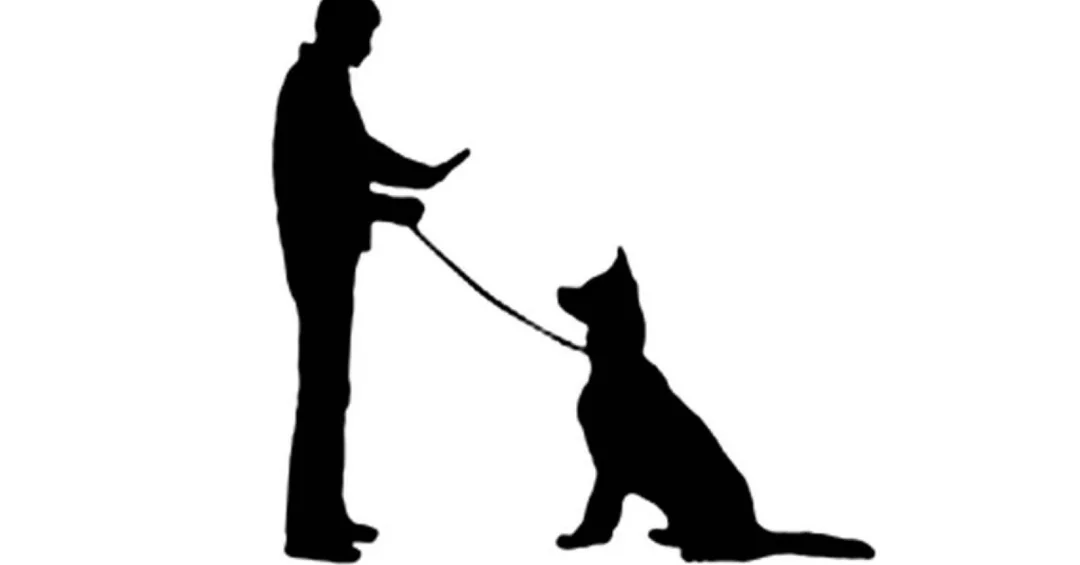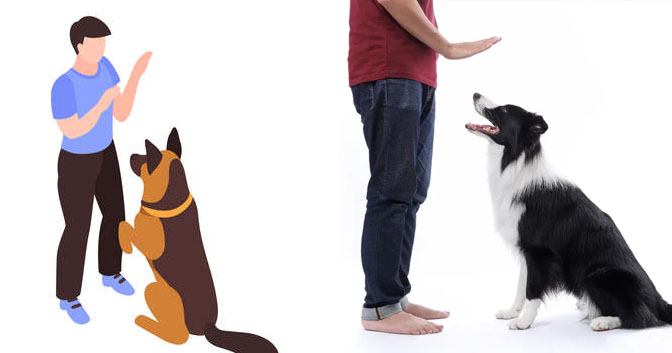Effective Dog Training By Hand Signal is important. for Dog training hand signals are straightforward to teach and understand for most dogs. Furthermore, teaching your dog hand signals might help you communicate in situations where your dog can’t hear you properly.
Dogs are quite good at responding to human body language cues, so teaching them to follow both verbal and nonverbal orders at the same time can be extremely advantageous. After a while, you can put them to the test to see which one performs best.
To teach dog obedience hand signals, all you need are some positive rewards (dog treats or bits of dog food kibble) and a little know-how. There are various methods for teaching your dog to respond to hand signals. Here’s where to begin Effective Dog Training:
How to Begin Using Hand Signals for Dogs
Before you start using hand signals, make eye contact with them to ensure you have their attention. Then start using hand signals. Hand signals for dogs are intended to teach your dog to associate a hand gesture with one of your spoken instructions. Link a precise gesture to a specific vocal signal, such as lifting a piece of kibble up beyond your dog’s nose and saying “sit.” Getting your dog to respond solely to the hand signal requires skill and repetition.
Assume your dog is already aware of the relationship between a visual cue for “sit” and the action you want them to undertake (sitting). The next step is to make a new association between an unfamiliar verbal cue and a visual cue they are already familiar with.
To begin, pair the verbal cue with the hand signal (examples of popular hand signals are shown below). When your dog does the right thing, immediately encourage that behavior. You may need to do this several times to guarantee that your dog understands the association.
While continuing to use the food reinforcement, gradually remove the verbal cue. For a while, you might rely solely on the verbal instruction and the hand signal.
Remove the piece of food from the equation gradually after your dog dependably responds to the silent hand motion while you have the meal. Soon, your dog will sit, lie down, or come when you wave your hand.

Simple Hand Signals for Teaching Sit to Dogs
Begin by placing your dog in front of you. Hold a piece of kibble in your fingers and pull it up gently with your hand at your side, folding your arm as if you were going to hurl something over the same shoulder.
Bring the reinforcement past your dog’s nose carefully. Say “sit” simultaneously. You’re directing their gaze upward as you say, “sit.” When your dog sits, reward them with a treat.
Downsizing Instruction (Effective Dog Training)
Begin by placing your dog in front of you. Hold the reinforcement in your fingers and draw it down, maintaining your arm straight, until it hangs at your side, with your hand high over your head. As you signal, slowly bring the reinforcement past your dog’s nose.
Say “down” simultaneously. You’re directing your dog’s snout downward as you say “down.” When your dog lays down, give them praise and reinforcement.
Teaching Come (Effective Dog Training)
Begin with your dog in front of you and the reinforcement between your fingers. Hold your arm out to the side, parallel to the ground. Sweep your arm forward until your hand is touching your opposite shoulder.
At start, go gently, bringing the reinforcement past your dog’s nose as you signal. Say “come” and take a couple steps backwards at the same time. When your dog approaches, give them praise and reinforcement.
Dogs are eager to please and appreciate the mental stimulation that learning new things provides. Teaching them to respond to hand signals and nonverbal cues will not only provide them with numerous practical uses, but it will also provide you and your dog with a new bonding experience.

